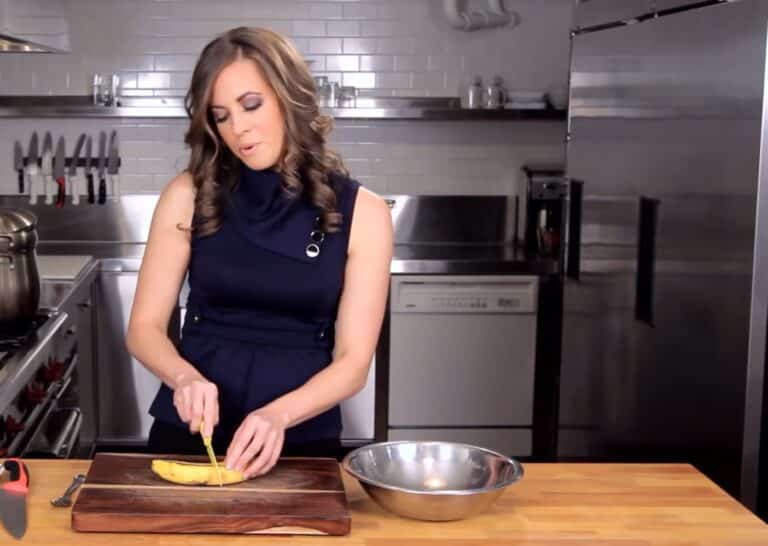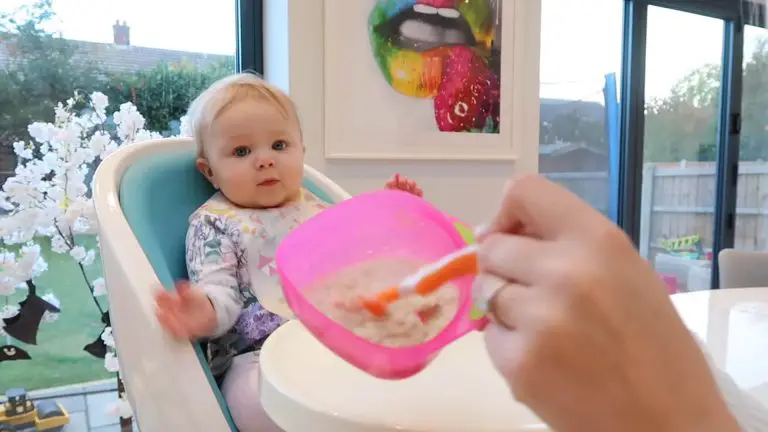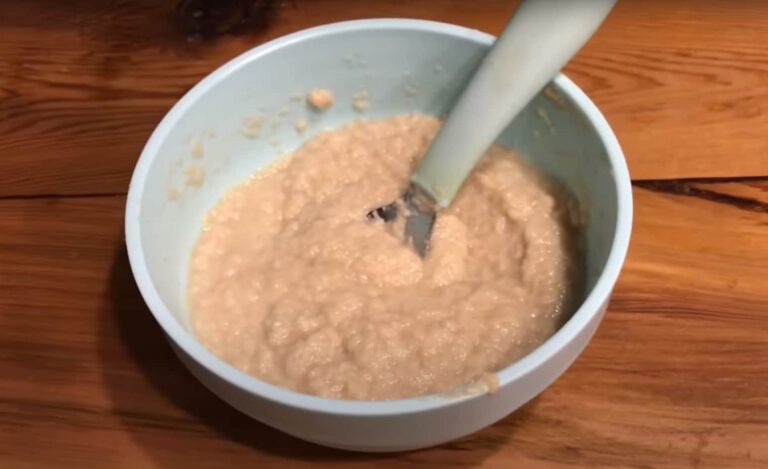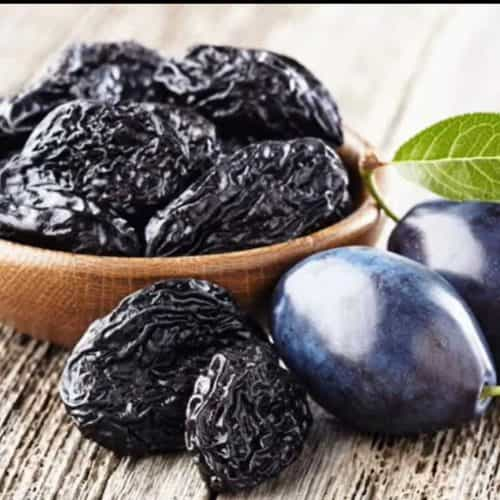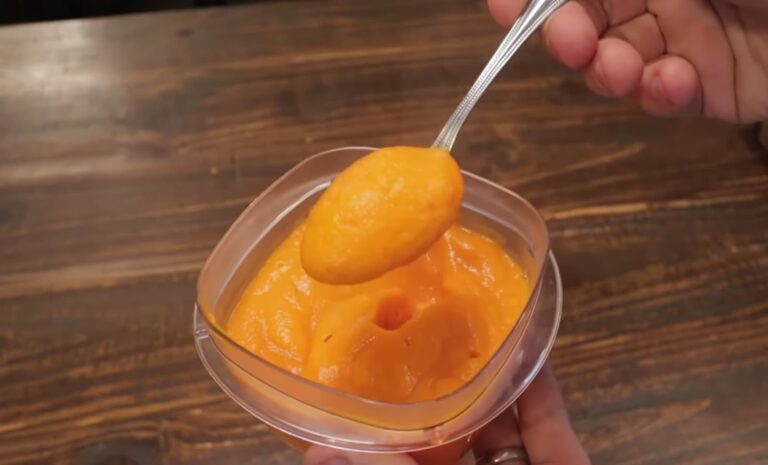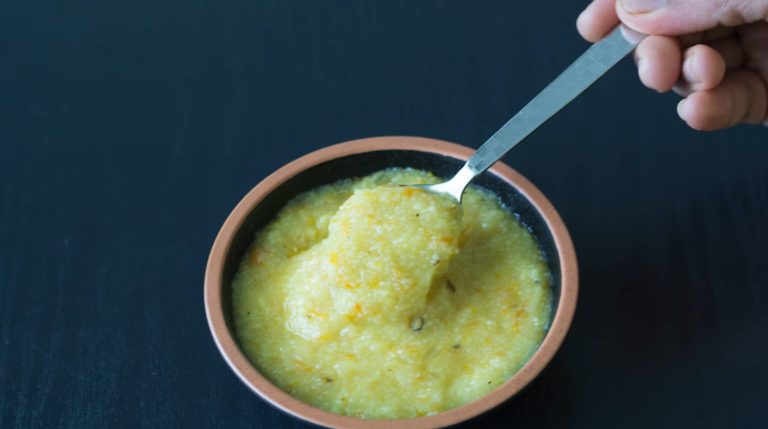How to Make Plum Puree for Babies?
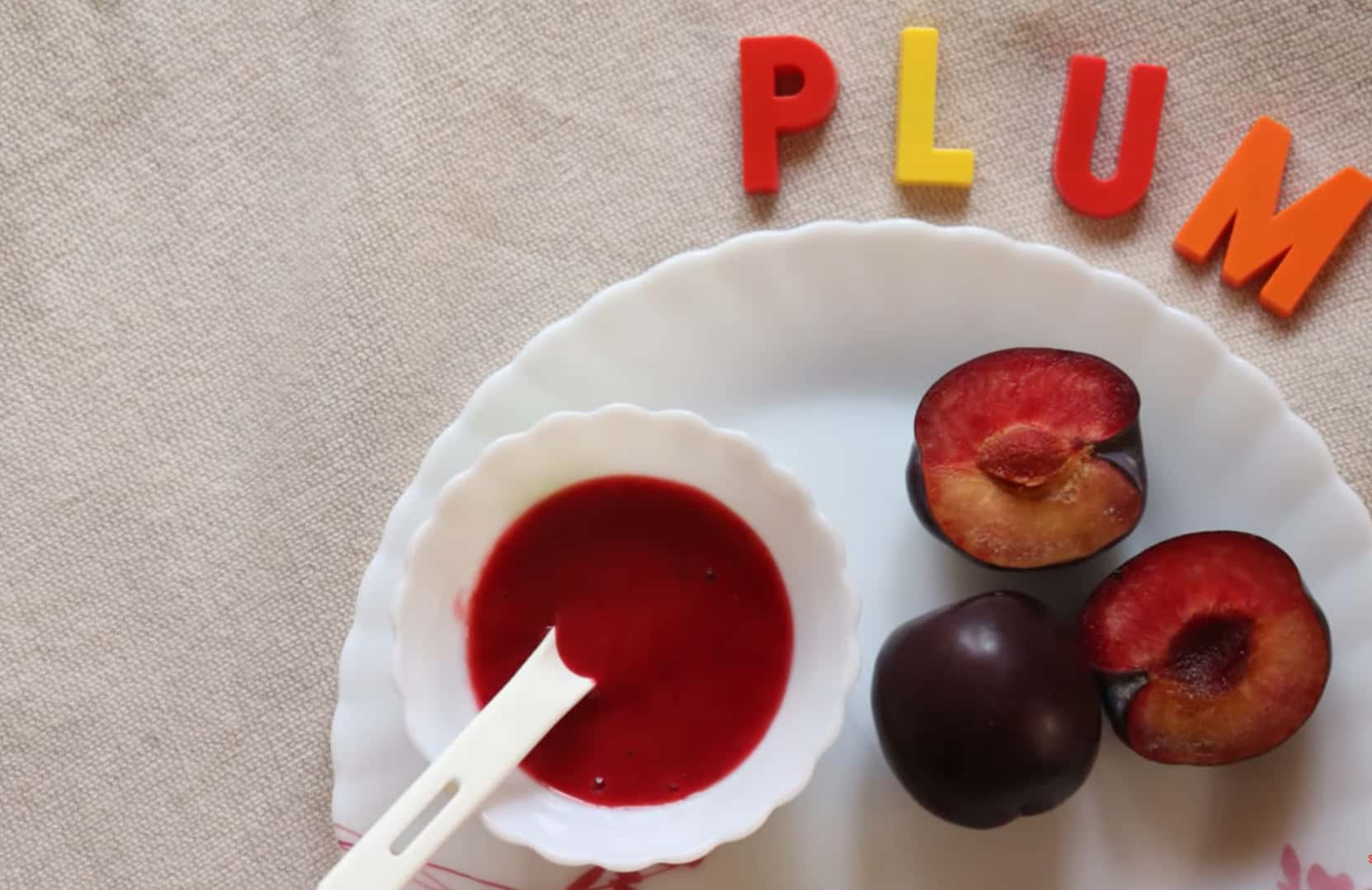
To make plum puree for babies, puree the plum slices in a food processor or blender until smooth, adding water as needed for desired consistency. For a chunkier puree, use a stick blender or mash the plums with a fork.
Remember to remove the skin before pureeing for a smoother texture.
Choosing The Right Plums For Puree
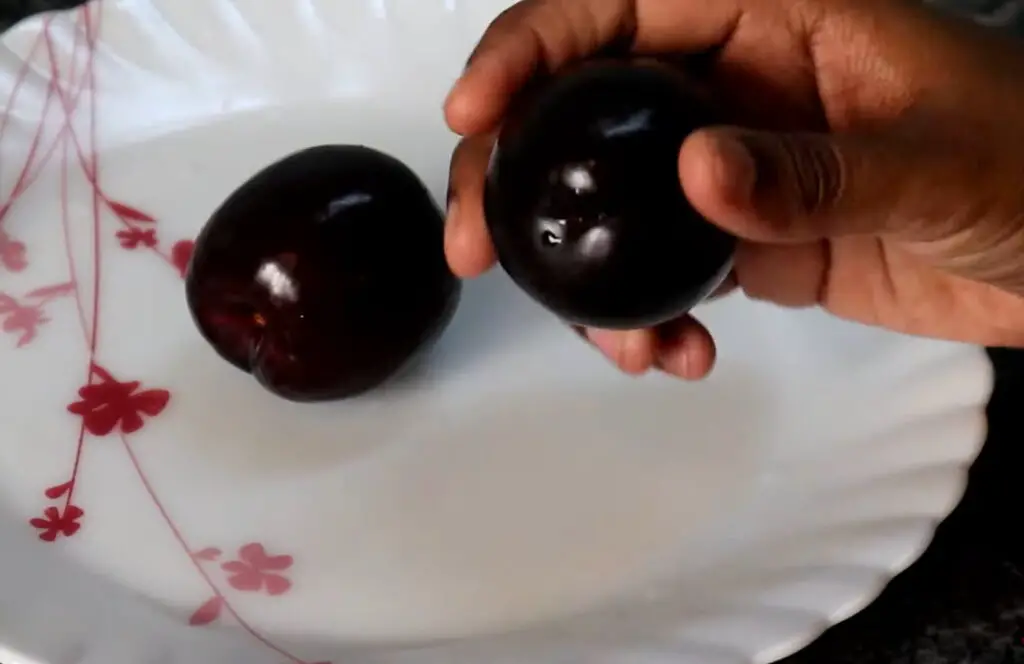
When it comes to making plum puree for babies, choosing the right plums is crucial. The quality and ripeness of the plums will greatly impact the taste and texture of the puree, ensuring a delightful experience for your little one. In this section, we will discuss the differences between ripe and unripe plums, as well as the importance of choosing organic plums for your baby’s puree.
Ripe Vs Unripe Plums
Ripe plums are not only sweeter but also offer a softer texture, which makes them perfect for pureeing. The natural sugars in ripe plums enhance the flavor of the puree and make it more appealing to your baby’s taste buds. When selecting ripe plums, look for those that are slightly soft to the touch with a deep color and a sweet aroma.
On the other hand, unripe plums are firmer and have a more tart taste. While they can still be used for pureeing, it is essential to ensure that they have reached a stage where they are suitable for consumption. To determine if an unripe plum is ready for pureeing, gently press the fruit to see if it gives a little. If it is still too firm, give it some more time to ripen before using it in your baby’s puree.
Organic Vs Conventional Plums
When it comes to choosing plums for your baby’s puree, opting for organic plums is highly recommended. Organic plums are grown without the use of synthetic pesticides, fertilizers, or genetically modified organisms (GMOs). This makes them a healthier option for your little one, as they do not contain any harmful chemicals that could affect their delicate system.
Conventional plums, on the other hand, may have been treated with pesticides during the growing process. While the traces of pesticides may be within acceptable limits, it is always best to prioritize your baby’s health and opt for organic plums whenever possible. By choosing organic plums, you can have peace of mind knowing that you are providing your baby with the best possible ingredients for their puree.
In conclusion, when making plum puree for your baby, selecting the right plums is essential. Opting for ripe plums will ensure a sweeter flavor and a softer texture while choosing organic plums will prioritize your baby’s health and well-being. So, don’t forget to keep these factors in mind the next time you go plum shopping for your baby’s puree.
Preparing Plums For Puree
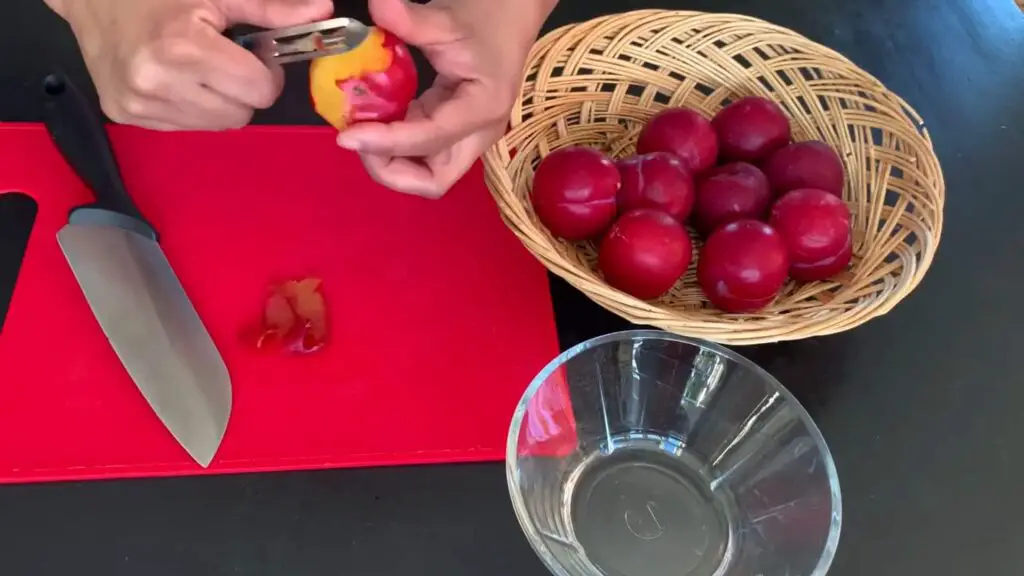
Plum puree is a nutritious and delicious option for introducing solids to your baby. Before you can start making the puree, you need to prepare the plums. Follow these steps to ensure your plums are ready for pureeing.
Washing The Plums
The first step in preparing plums for puree is to wash them thoroughly. This helps remove any dirt or residue that may be on the skin. To pass the plums, you can follow these simple steps:
- Fill a clean bowl or sink with cold water.
- Place the plums in the water and gently rub them with your hands to remove any dirt.
- Rinse the plums under running water to remove any remaining dirt or soap.
- Pat the plums dry with a clean towel.
Removing The Pits
Once the plums are clean, it’s time to remove the pits. The pits can be a choking hazard for babies, so it’s important to make sure they are completely removed before pureeing the plums. Here’s how you can remove the pits:
- Hold a plum firmly in one hand.
- Using a sharp paring knife, make a small cut around the circumference of the plum.
- Gently twist the two halves of the plum in opposite directions to separate them.
- Remove the pit from each half of the plum using a spoon or your fingers.
Once you have removed the pits, you can proceed with pureeing the plums to create a smooth and creamy puree for your little one. Remember to store any leftover puree in an airtight container in the refrigerator for up to three days, or in the freezer for up to three months.
Cooking Plum Puree
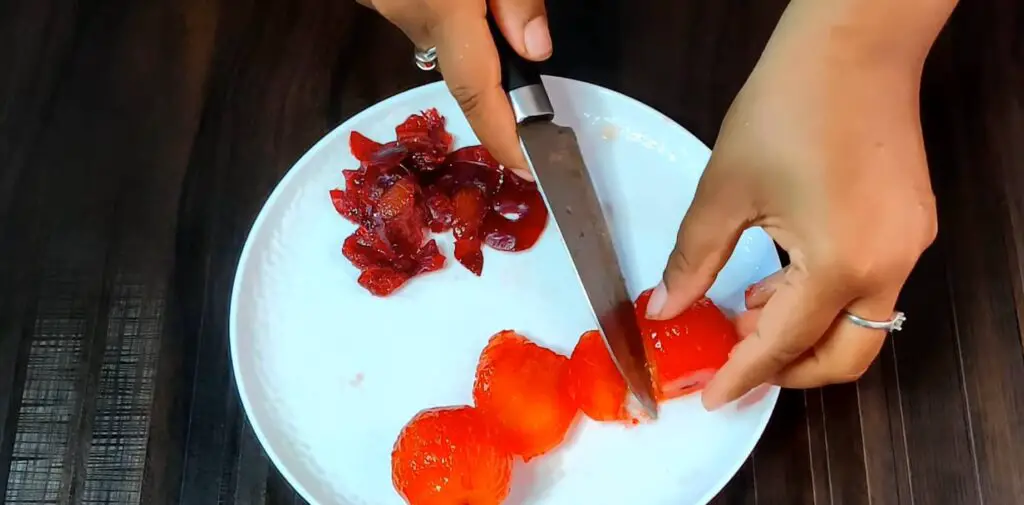
Cooking plum puree for your baby is a simple and nutritious way to introduce them to new flavors and foods. When it comes to cooking plum puree, there are two main methods you can choose from: stovetop method and steaming method.
Stovetop Method
The stovetop method is a quick and easy way to cook plum puree. Here’s how you can do it:
- Start by washing and removing the pits from the plums. You can peel the plums if you prefer, but it’s not necessary.
- Place the plums in a saucepan and add a little water to cover the bottom of the pan.
- Cover the saucepan with a lid and simmer the plums over medium heat for about 5-10 minutes, or until they are tender.
- Once the plums are cooked, remove them from the heat and let them cool slightly.
- Transfer the cooked plums to a food processor or blender and puree until smooth. You can add a little water or breast milk/formula to reach the desired consistency.
- Once the puree is smooth, let it cool completely before storing it in an airtight container in the refrigerator or freeze it in ice cube trays for future use.
Steaming Method
Steaming the plums is another great method to retain the maximum nutritional value. Here’s how you can steam plums to make puree:
- Start by washing and removing the pits from the plums. You can peel the plums if you prefer, but it’s not necessary.
- Cut the plums into small slices or quarters.
- Place the plum pieces in a steamer basket and set it over a saucepan filled with a small amount of water.
- Cover the saucepan with a lid and steam the plums for about 10-15 minutes, or until they are soft and tender.
- Once the plums are steamed, remove them from the heat and let them cool slightly.
- Transfer the steamed plums to a food processor or blender and puree until smooth. You can add a little water or breast milk/formula to reach the desired consistency.
- Once the puree is smooth, let it cool completely before storing it in an airtight container in the refrigerator or freeze it in ice cube trays for future use.
Using either the stovetop or steaming method, you can easily prepare plum puree for your little one. Remember to always check the temperature and consistency of the puree before feeding it to your baby. Enjoy exploring new flavors with your little gourmet!
Blending Plum Puree
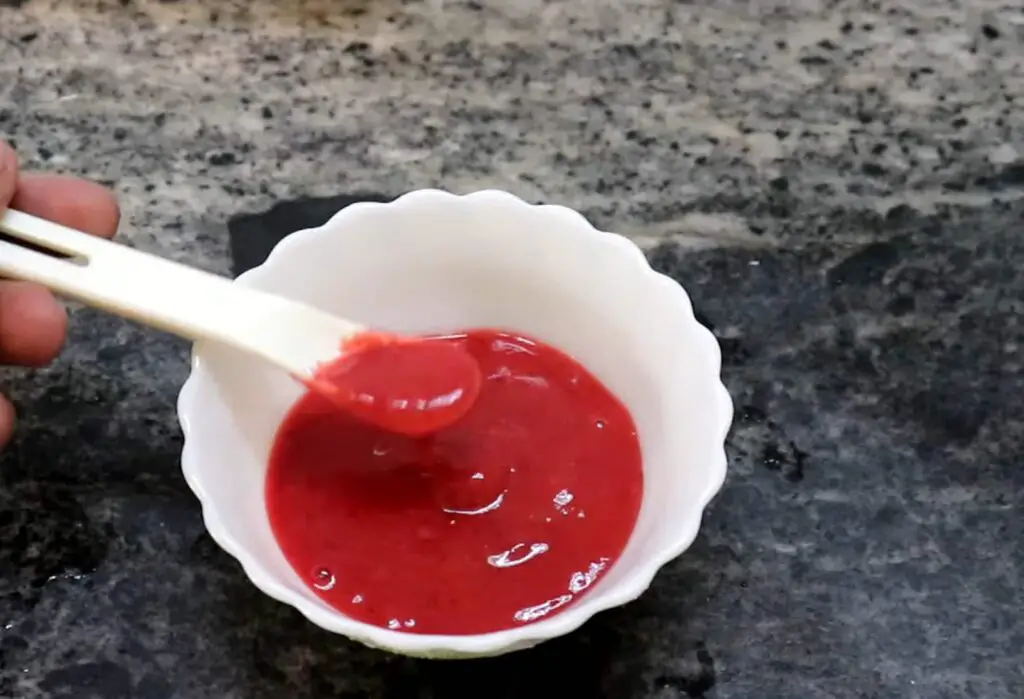
Blending plum puree is a quick and easy method to create a smooth and tasty baby food. Whether you choose to use a stick blender or a food processor, both options can effectively puree the plums to the desired consistency.
Using A Blender
To blend plum puree using a blender, follow these simple steps:
- Wash and remove the pits from the plums.
- Cut the plums into smaller pieces to make blending easier.
- Place the plum pieces into the blender.
- Blend the plums on high speed until smooth and creamy, adding water as needed to reach the desired consistency.
- If desired, you can also add a little of your baby’s usual milk to enhance the flavor and texture of the puree.
- Pour the blended plum puree into an airtight container or ice cube trays for freezing.
Using A Food Processor
If you prefer to use a food processor to make plum puree, here’s how you can do it:
- Wash and pit the plums, then cut them into smaller pieces.
- Place the plum pieces into the food processor.
- Pulse the plums several times to break them down.
- Blend the plums on high speed until smooth and creamy, adding water as needed.
- As with the blender method, you can add a little of your baby’s milk for extra flavor and texture.
- Transfer the puree to a container or ice cube trays for storage.
Whether you choose to use a blender or a food processor, both methods can help you create a smooth and nutritious plum puree for your little one. Remember to wash and remove the pits from the plums before blending, and feel free to adjust the consistency by adding water or your baby’s milk. Now, you’re ready to introduce this delicious homemade puree to your baby’s mealtime!
Storing Plum Puree
After making a delicious batch of plum puree for your little one, it’s important to know how to store it properly to maintain its freshness and nutritional value. Here are a few options for storing plum puree:
Refrigeration
Refrigeration is the most common and convenient method for storing plum puree. Follow these simple steps:
- Allow the plum puree to cool to room temperature.
- Transfer the puree to an airtight container, such as a glass jar or BPA-free plastic container.
- Make sure to leave some headspace at the top of the container to allow for expansion when freezing.
- Seal the container tightly to prevent any air from entering.
- Label the container with the date of preparation to keep track of its freshness.
- Place the container in the refrigerator, where it can be stored for up to 3 days.
Freezing
Freezing plum puree is an excellent option for preserving it for more extended periods. Follow these steps to freeze plum puree:
- Allow the plum puree to cool to room temperature.
- Transfer the puree to an ice cube tray, filling each compartment with the puree.
- Cover the ice cube tray with plastic wrap or aluminum foil to prevent freezer burn.
- Place the ice cube tray in the freezer and freeze until solid, which typically takes around 4-6 hours.
- Once the puree cubes are frozen, transfer them to a freezer-safe bag or container.
- Label the bag or container with the date of preparation.
- Return the bag or container to the freezer, where it can be stored for up to 3 months.
When you’re ready to use the frozen plum puree, simply thaw the desired amount in the refrigerator overnight or defrost it in the microwave on the defrost setting.
With these storage methods, you can conveniently store plum puree for future use and ensure that your little one gets the best nutrition from their homemade baby food.
Serving Plum Puree To Babies
Combining Plum Puree With Other Baby Foods
Combining plum puree with other baby foods is a great way to introduce new flavors and textures to your baby’s diet. Here are some ideas to get you started:
Fruit combination:
You can combine plum puree with other fruit purees to create a delicious blend of flavors. Some popular options include apple, pear, and blueberry puree. Simply mix equal parts of plum puree with your chosen fruit puree to create a tasty combination.
Veggie combination:
If you’re looking to introduce vegetables to your baby’s diet, you can mix plum puree with vegetable purees such as sweet potato, butternut squash, or carrot. This not only adds variety to your baby’s meals but also provides a range of essential nutrients.
Protein combination:
To boost the protein content of your baby’s meal, you can mix plum puree with pureed protein-rich foods such as cooked chicken, turkey, or tofu. This combination not only adds a savory element to the meal but also helps to keep your baby satisfied for longer. Remember, when introducing new foods to your baby, it’s essential to do so one at a time to monitor for any potential allergies or adverse reactions. Start by offering a small amount of the combined purees and gradually increase the quantity as your baby adjusts to the new flavors. In conclusion, serving plum puree to babies is a nutritious and delicious choice. Whether you’re introducing plum puree on its own or combining it with other baby foods, be sure to follow your baby’s cues and enjoy this exciting phase of your baby’s food journey.
Benefits Of Plum Puree For Babies
Nutritional Value Of Plum Puree
Plum puree is packed with essential nutrients that are beneficial for your baby’s growth and development. Here are some key nutritional components found in plum puree:
- Vitamin C: Plums are rich in vitamin C, which helps support your baby’s immune system and aids in the absorption of iron.
- Vitamin A: Plum puree contains vitamin A, which is important for healthy vision and skin.
- Fiber: Plums are a good source of dietary fiber, which can help regulate your baby’s digestive system and prevent constipation.
- Potassium: Plum puree is high in potassium, an essential mineral that helps maintain healthy blood pressure levels and supports proper muscle and nerve function.
- Antioxidants: Plums are loaded with antioxidants, such as anthocyanins, which help protect your baby’s cells from damage caused by free radicals.
Health Benefits Of Introducing Plum Puree To Babies
Introducing plum puree to your baby’s diet can provide them with various health benefits. Here are some reasons why you should consider incorporating plum puree into your baby’s meals:
- Improved Digestion: Plum puree is a natural laxative that can help regulate your baby’s bowel movements and alleviate constipation.
- Enhanced Immunity: The vitamin C found in plum puree can boost your baby’s immune system, protecting them from common illnesses.
- Healthy Vision: Plum puree contains vitamin A, which is essential for maintaining good eyesight and overall eye health.
- Heart Health: The potassium content in plum puree can help maintain healthy blood pressure levels and reduce the risk of cardiovascular diseases.
- Antioxidant Protection: The antioxidants in plum puree can help protect your baby’s cells from oxidative stress and reduce the risk of chronic diseases.
By offering plum puree to your little one, you are introducing them to a nutritious and delicious food that can support their growth and overall well-being.
Frequently Asked Questions Of How To Make Plum Puree For Babies?
How To Puree Plum For Babies?
To puree plum for babies, remove the skin and pit, then blend the plum slices in a food processor or blender until smooth. Add water as needed for desired consistency. For a chunkier puree, use a stick blender.
Can Babies Eat Plum Puree?
Yes, babies can eat plum puree. It is recommended to cook the plums, remove the skin, and then puree them until smooth. The plum puree is a nutritious and delicious option for babies.
Do You Peel Plums For Puree?
No, you don’t need to peel plums for puree. Soak them in boiling water, then transfer them to ice water. Peel the skin with your fingers or a knife.
Do You Need To Peel Plums For Babies?
No, you do not need to peel plums for babies. Just puree the plum slices until smooth in a food processor or blender. Add water as needed for desired consistency. For a chunkier puree, leave it slightly textured.
Conclusion
To conclude, making plum puree for babies is a simple and nutritious way to introduce new flavors and textures into their diet. Whether you choose to use fresh or frozen plums, the process remains the same. Simply peel and pit the plums, steam or boil them until soft, and blend them until smooth.
Plum puree can be served on its own or mixed with other fruits or vegetables. Remember to always consult your pediatrician before introducing new foods to your baby. Enjoy the benefits of this delicious homemade puree!

